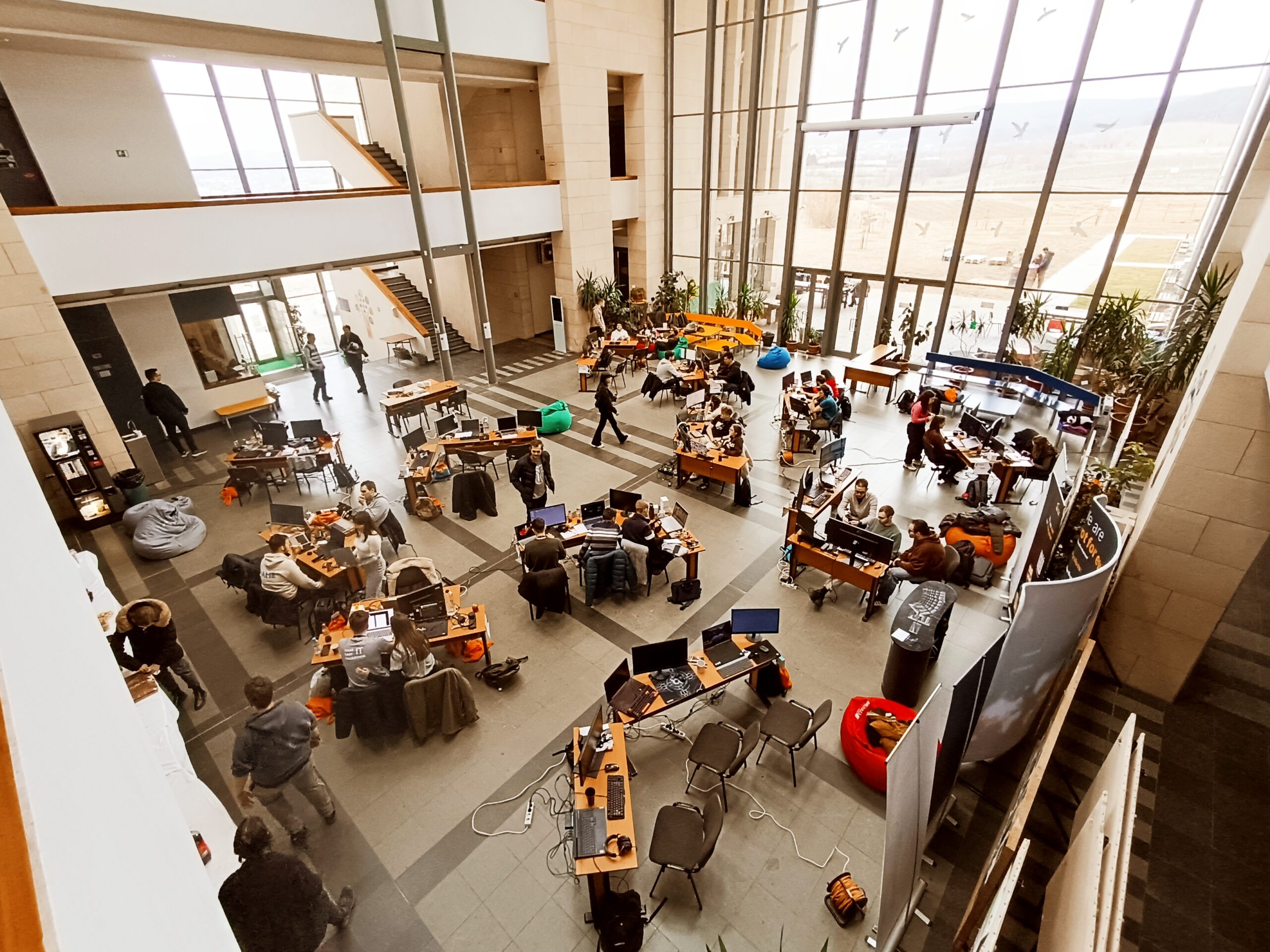After fulfilling our need to be connected as quickly as possible, with as many people as possible, the need of understanding our current location and using the outmost possible of your context came to surface. Why carry a special navigation device, a tourist map, a local events guide or other obsolete items when you can have it all on your smartphone? Why call your drivers, your bank agent or your RE agent, when you can easily locate and track the entire vehicle fleet, the closest ATM or the property you are looking for? Yes, LBS (Location Based Services) can solve all these queries.
What drives LBS industry growth? How is the society being reshaped? What are the dilemmas that LBS are facing? These are the main questions that 2012 LBS industry players are addressing.
Location. Location. Location.
It is a well known epitome that you might have heard several times in your life, most probaly from real estate agents. It is just their way to express the importance of location. From ancient military strategies and urban developments, choosing the right location for a specific action or edifice, knowing and controlling the territory was a premise for success. It is still available in our times. If, on one hand you – as a person want to know how to move around, on the other hand, others – as a person or service providers, want to know your location. It’s a two-way road.
Technology made it easier once again. While our parents used to carry a map when exploring new sites and ran to the public phone booth to call for advice, we are now carrying only a smartphone.
LBS Enablers
As of 2012, we are wittnessing great LBS experience. First, there are the technological platforms enabling LBS: Cell ID (Cell Identifier), GPS (Global Positionning System), aGPS (assisted Global Positionning System) or BSN (Broadband Satellite Network). Secondly there is the hardware for it – multipurpose (like smartphones) or singlepurpose (navigation device, object tracking device, etc.). Third, there are the user parties – personal, corporate and institutional. The criteria that must be considered are: location accuracy, range coverage, security of service, optimal costs.
Demand for LBS
The current LBS market responds to 4 main requests: to navigate, to find people and objects, to advertise&inform and to network. Historically, each of these request was dealt independently by solutions with specific software and hardware. As the mobile technology evolved so much in the past years, smartphones and other similar personal devices tend to replace single purpose devices.
The sectors that integrate most of the LBS technology are military, transportation and logistics, telecom and health. Recently entertainment and mobile commerce are quickly rising, accompanied by a set of personal service set: weather forecasts, networking. Real Estate industry is becoming a VIP demander for location based systems and solutions. Steadily, the overall economy is adopting LBS as we are doing more and more actions „on the go” straight from our personal devices.
Codespring and LBS Experience
Location Based Services is part of our company’s expertise as we have been involved in several large projects. Codespring has integrated location based solutions for terrestrial and maritime fleet management, for navigation, for resources tracking with dynamic distribution, for security systems.
Codespring has also developed its’ own Traffic Enforcement Camera warning system for iPhone. It handles different type of traffic cameras, speed limits in metric and imperial unit systems, has a fully customizable speed camera database, map feature with track recorder, statistics and Google Maps integration provided you have Internet connection. As most laser radar detectors draw your attention too late to photo enforcement systems, iSpeedCam might be your ultimate companion to avoid speed tickets.
Codespring’s work has impact on both business indicators and users’ experience. We are also involved in deploying convergent technologies such as: IPTV, Voice over IP, Voice call continuity, Digital video broadcasting. We have also been involved in developing several social networking oriented LBS functions.Our technical team is constantly involved in the integration of latest hardware for delivering state-of-the-art communication systems.
Location Based Apps Performance
The mobile industry stimulates the developemnt of various applications using location tracking features Some of the key functions to follow are: the number of operating systems supported, if web application is available or not, the way of user identification, the location update frequency, behaviour for stale location, location history, sharing of temporary location, sharing location with friends, precision levels configurable per friend basis, option to manually configure location, check into nearby place, custom locations labels, source of friend’s name and photos, maximum distance to friends locations.
What worth mentionning, based on the previous list, is the degree to which social network has an impact in the development of LBS supported applications.
The Privacy Issue
Probably the most debated topic related to lBS adoption is the privacy around your location. Is it safe to share your location? Different generations may answer this question in different ways. While most of the world smartphone owners use the device in a conventional way, the tech-savvy and younger generations are using it in ways that even their developers did not think of.
While for some, sharing their location is something normal and fun, for others it is subject to confidentiality and privacy matters. In both cases, one fact is sure: in case of health problem, criminal attack or some sort of incident it is safer that the person can be located by security officers, emergency aid or friends.
In this respect some privacy-enhancement technologies (PET) have been developed. PETs may consist in simple on/off switches or in sophisticated solutions that use anonymization techniques or location obfuscation techniques.
Reasons for Enabling LBS Feature
As we learn from the United Stated population, that is by far the one using the most of LBS in the world, the main resons for sharing one’s location are: navigation, weather information, traffic information, city locations and reviews.
Secondly, service providers like restaurants, hotels or shopping centers pushed mobile commerce by launching coupons and promotions for LBS users. This turns out to be a good reason to use LBS for catching offers and benefitting from promotions. And again, sharing location enbales friends to learn in real time where they are and meet at common location: resaturant, museum, cinema or other.
Particular situations are recommended to take advantage of LBS : a pacient seeking for the nearest hospital, a lost child looking for the closest police station, an old person looking for some type of assitance, a driver looking for a car service and many other similar contexts.
Doing Things Different and Better
In the future, all parties: technology providers, users and standards regulators – should focus on making these services safer, more usefull and better. The rising intensity of LBS usage opens new business opportunities and new community-related opportunities. With the latest Augmented Reality (AR) technologies, LBS performance and user experience can be increased. Travelling and navigation already started this process. It is up to our collective imagination to find the right way to do this.
What About Industrial Consumers?
We are particularly interested in how the industry is intaking the LBS phenomenon. Consecutive to our own development experience we find a great value in integrating LBS feature in industrial applications at corporate level. The type of services that may be deployed are related to the Supply Chain Management, Inventory Management, Customer Relationship Management, Smart Transportationa nd Systems Infrastructure.
The greatest leap will be achieved in the nearest future when identification, connectivity and inference will achieve seamless convergence. Dynamic systems exploiting at the maximum LBS capabilities will come alive when materials and objects will be provided with specific sensors that will facilitate the constant stream of information. Some say this is too futuristic but some developments are already in place.
Analysts forecast the Location Based Services (LBS) market to reach values of the order of tens of billions in the next five years. As Europe and Asia are adopting more and more this type of service, we are also curious how the general LBS landscape will look like in 2017-2020. (D.C.)









